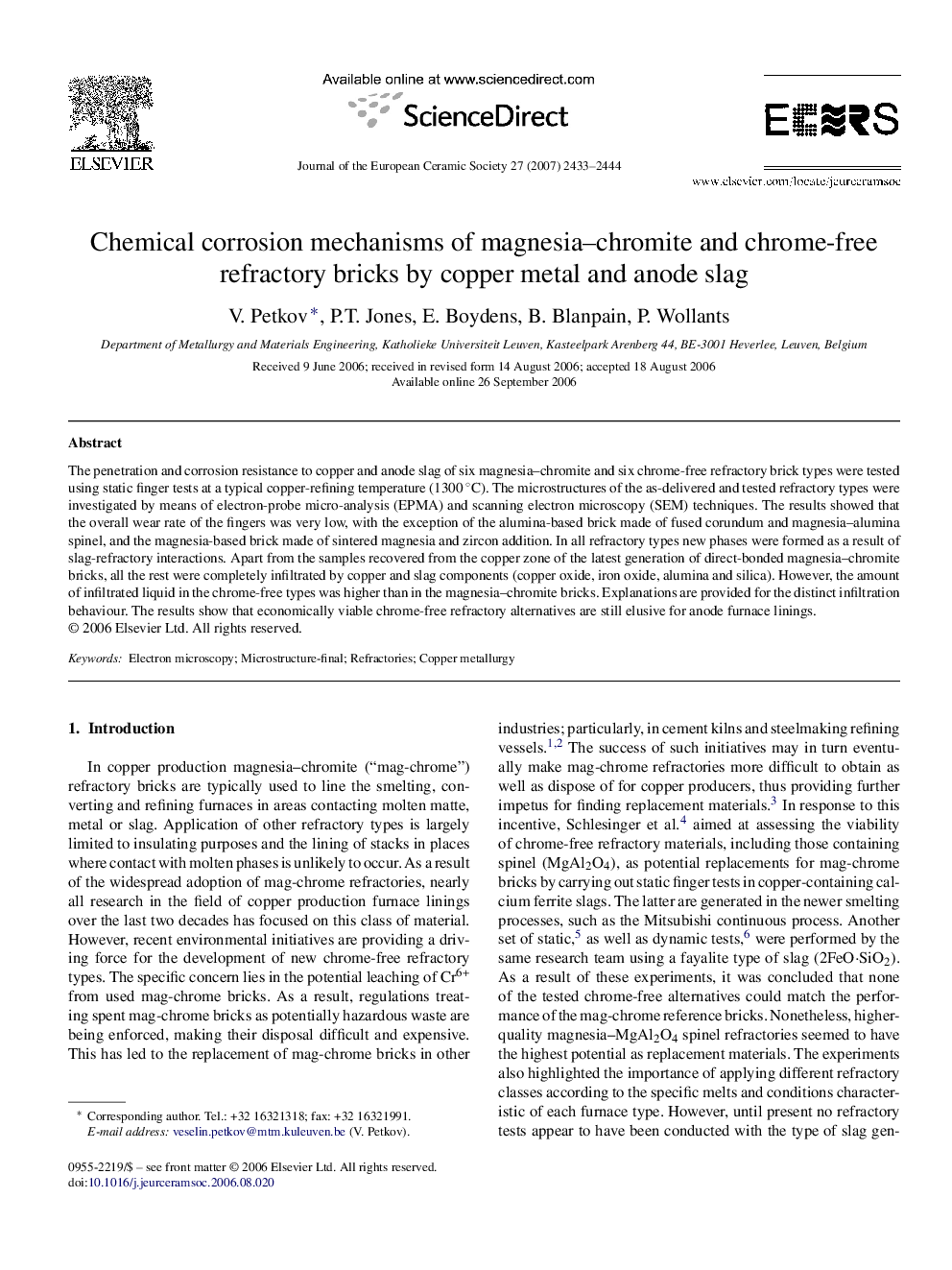| Article ID | Journal | Published Year | Pages | File Type |
|---|---|---|---|---|
| 1476806 | Journal of the European Ceramic Society | 2007 | 12 Pages |
The penetration and corrosion resistance to copper and anode slag of six magnesia–chromite and six chrome-free refractory brick types were tested using static finger tests at a typical copper-refining temperature (1300 °C). The microstructures of the as-delivered and tested refractory types were investigated by means of electron-probe micro-analysis (EPMA) and scanning electron microscopy (SEM) techniques. The results showed that the overall wear rate of the fingers was very low, with the exception of the alumina-based brick made of fused corundum and magnesia–alumina spinel, and the magnesia-based brick made of sintered magnesia and zircon addition. In all refractory types new phases were formed as a result of slag-refractory interactions. Apart from the samples recovered from the copper zone of the latest generation of direct-bonded magnesia–chromite bricks, all the rest were completely infiltrated by copper and slag components (copper oxide, iron oxide, alumina and silica). However, the amount of infiltrated liquid in the chrome-free types was higher than in the magnesia–chromite bricks. Explanations are provided for the distinct infiltration behaviour. The results show that economically viable chrome-free refractory alternatives are still elusive for anode furnace linings.
